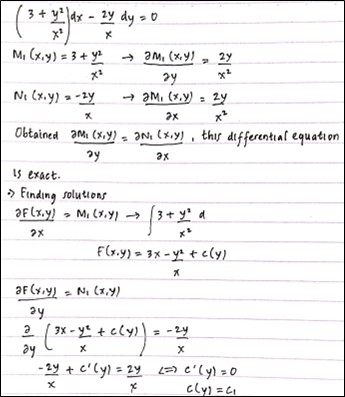Implementation of SOLO taxonomy and Newman error analysis in first-order differential equation
##plugins.themes.bootstrap3.article.main##
Abstract
First-order Ordinary Differential Equation (ODE) has many applications in physics, engineering, biology, economics, and ecology. Therefore, mastering the concepts and methods of solving ODE is essential for students to be able to apply mathematics in solving real-world problems. However, the teaching of first-order ODE has not paid attention to practical applications, so that students have difficulty linking theory with real cases. This study aims to analyze the implementation of the SOLO taxonomy and Newman Error Analysis (NEA) in first-order ODE. The methodology used is a case study. The research subjects consisted of nine students of the mathematics department of FMIPA Universitas Negeri Padang. Data were collected through tests, interviews, and documentation. Then the data were analysed quantitatively and qualitatively. The results showed that there were five errors in solving first-order ODE made by students, namely Reading Errors (RE), Comprehension Errors (CE), Transformation Errors (TE), Process Skill Errors (PE), and Encoding Errors (EE). Some of the causes of these errors include students' low ability to read mathematical symbols, students' inaccuracy, not being able to use algorithms correctly, not mastering the concepts of algebra, differential, and integral, as well as not understanding in determining the systematic solution of the problem and not being accustomed to writing the final answer. This information can be used as a guideline for lecturers in designing strategies and lecture designs for first-order ODE.
##plugins.themes.bootstrap3.article.details##

This work is licensed under a Creative Commons Attribution-ShareAlike 4.0 International License.
The author is responsible for acquiring the permission(s) to reproduce any copyrighted figures, tables, data, or text that are being used in the submitted paper. Authors should note that text quotations of more than 250 words from a published or copyrighted work will require grant of permission from the original publisher to reprint. The written permission letter(s) must be submitted together with the manuscript.References
Biggs, J., Tang, C., & Kennedy, G. (2022). Teaching for quality learning at university 5e. McGraw-hill education (UK).
Blanchard, O., & Fischer, S. (1989). Lectures on macroeconomics. MIT press.
Blanchard, P., Devaney, R. L., & Hall, G. R. (2012). Differential equations. Brooks/Cole, Cengage Learning.
Boyce, W. E., DiPrima, R. C., & Meade, D. B. (2017). Elementary differential equations and boundary value problems. John Wiley & Sons.
Brabrand, C., & Dahl, B. (2009). Using the SOLO taxonomy to analyze competence progression of university science curricula. Higher Education, 58(4), 531–549. https://doi.org/10.1007/s10734-009-9210-4
Edwards, C. H., & Penney, D. E. (2000). Differential equations and boundary value problems: computing and modeling. Pearson Educación.
Ekamornaroon, T., Ngiamsunthorn, P. S., Phaksunchai, M., & Chonchaiya, R. (2024). Identifying common errors in polynomials of eighth grade students. International Journal of Evaluation and Research in Education, 13(1), 57–68. https://doi.org/10.11591/ijere.v13i1.25131
Johnson, P., Almuna, F., & Silva, M. (2022). Therole of problem context familiarity in modelling first-order ordinary differential equations. Journal on Mathematics Education, 13(2), 323–336. https://doi.org/10.22342/jme.v13i2.pp323-336
Korkmaz, F., & Unsal, S. (2017). Analysis of attainments and evaluation questions in sociology curriculum according to the SOLO taxonomy [Sosyoloji Dersi Öğretim Programı Kazanımları ve Değerlendirme Sorularının SOLO Taksonomisine Göre Analizi]. Eurasian Journal of Educational Research, 17(69), 75–92. https://dergipark.org.tr/en/pub/ejer/issue/42462/511433
Kusmaryono, I., Suyitno, H., Dwijanto, D., & Dwidayati, N. (2018). Analysis of abstract reasoning from grade 8 students in mathematical problem solving with SOLO taxonomy guide. Infinity Journal, 7(2), 69–82. https://doi.org/10.22460/infinity.v7i2.p69-82
Mahadewsing, R., Getrouw, D., & Calor, S. M. (2024). Prior knowledge of a calculus course: The impact of prior knowledge on students’ errors. International Electronic Journal of Mathematics Education, 19(3), 1–8. https://doi.org/10.29333/iejme/14765
Miles, M. B., Huberman, A. M., & Saldaña, J. (2014). Qualitative data analysis: A methods sourcebook. 3rd. Thousand Oaks, CA: Sage.
Mubarokah, A. A. L., & Amir, M. F. (2024). Primary students’ errors in solving mathematical literacy problems based on newman analysis. Mathematics Education Journal, 18(2), 217–230. https://doi.org/10.22342/jpm.v18i2.pp217-230
Newman, M. A. (1977). An analysis of sixth-grade pupil's error on written mathematical tasks. Victorian Institute for Educational Research Bulletin, 39, 31–43.
Özdemir, A. Ş., & Yıldız, S. G. (2016). The analysis of elementary mathematics preservice teachers’ spatial orientation skills with solo mode. Eurasian Journal of Educational Research(61), 217–236. https://doi.org/10.14689/ejer.2015.61.12
Potter, M. K., & Kustra, E. (2012). A primer on learning outcomes and the SOLO taxonomy. Course Design for Constructive Alignment(Winter 2012), 1–22.
Pratiwi, E., Nusantara, T., Susiswo, S., & Muksar, M. (2022). Routines’ errors when solving mathematics problems cause cognitive conflict. International Journal of Evaluation and Research in Education, 11(2), 773–779. https://doi.org/10.11591/ijere.v11i2.21911
Wardhani, T. A. W., & Argaswari, D. P. (2022). High school students'error in solving word problem of trigonometry based on newman error hierarchical model. Infinity Journal, 11(1), 87–102. https://doi.org/10.22460/infinity.v11i1.p87-102
Yarman, Y., Yerizon, Y., Dwina, F., Murni, D., & Hevardani, K. A. (2024). Analysis of concept construction and student errors on the topic of double integral based on apos theory. Mathematics Education Journal, 18(3), 367–386. https://doi.org/10.22342/jpm.v18i3.pp367-386
Yin, R. K. (2017). Case study research and applications: Design and methods. Sage publications.
Zill, D. G. (2009). A first course in differential equations with modeling applications (9th edition). Cengage Learning.

